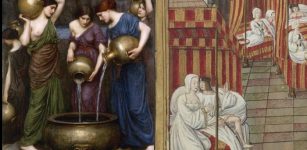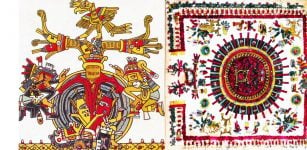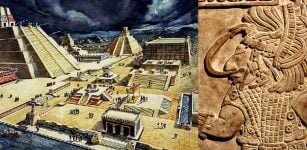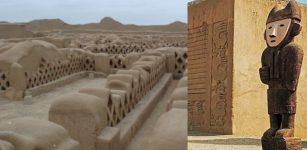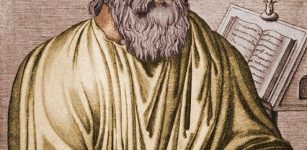First Book Of Breathing: Egyptian Papyrus Sheds Light On Funerary Text Helping The Deceased In Afterlife
Conny Waters – MessageToEagle.com – Ancient Egyptians prepared thoroughly for the afterlife and they were convinced that it was possible to be in the company of the gods, but only under certain circumstances.
Now, an ancient Egyptian papyrus FMNH31324 was used for the first time to analyze the ‘First Book of Breathing’, an ancient Egyptian funerary text helping the deceased to join the gods in the afterlife.
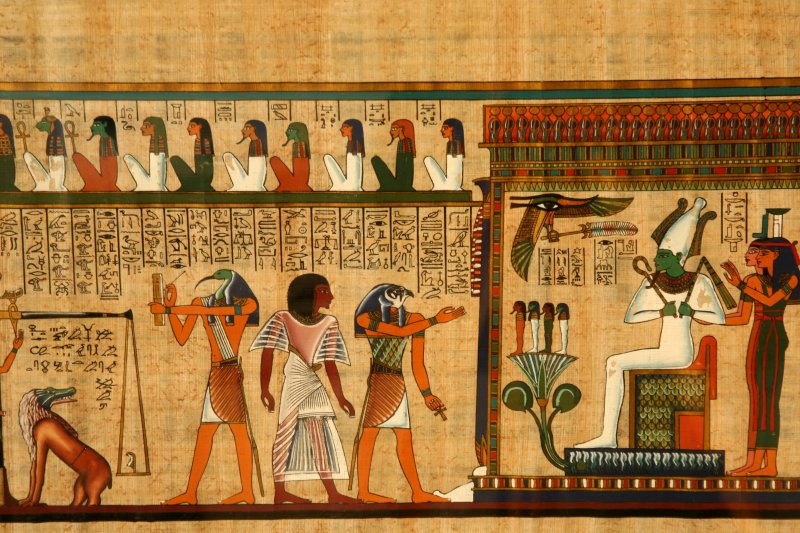
Credit: francescodemarco – Adobe Stock
The Papyrus FMNH31324 that was acquired by the Field Museum of Natural History in Chicago on May 24, 1894, after collector Edward E. Ayer purchased the papyrus for the museum while in Europe, sheds new light on how deceased people could join the gods in the afterlife.
“In recent years, a renewed focus has emerged on the dynamic vitality witnessed in the production and transmission of Egyptian funerary literature during the Ptolemaic and Roman Periods,” writes author Foy Scalf.
“The so-called Books of Breathing have been central to this ongoing discussion.”
By examining the origins of the First Book of Breathing, Scalf writes, it can be demonstrated that the composition was created through a careful exegetical process beginning with a selection of Book of the Dead spells following the sequence of the so-called “Saite Recension” that were then interwoven with new compositions, commentary, and the reworking or omission of specific passages.

Part of the Book of Breathing, hieratic papyrus. From Egypt, probably from Thebes. Ptolemaic period, 323–30 BCE. Neues Museum, Berlin
In the context of Papyrus FMNH 31324, this process coalesced the previously independent Book of the Dead spells into a single “narrative” structure focused on the divinization of the deceased and their presentation to the community of gods. Recognized as a new and distinct composition, the text was designated as the First Book of Breathing in the opening of many manuscripts.
While it is difficult to identify a more specific provenience than the Theban west bank from where numerous copies of the First Book of Breathing derive, the manuscript appears to be inscribed and illustrated by a single scribe. The incomplete nature of the text combined with the fact that the scribe wrote over the joins in the papyrus sheets demonstrates that the papyrus sheets were assembled into a scroll and cut to shape prior to being inscribed.
Damage to the papyrus has made it impossible to identify the manuscript’s owner and a precise date, although Scalf notes that it may be possible in the future to identify a possible owner if other papyri belonging to the same individual are later identified and published. The text was written with a split-reed kalamos pen and shows many paleographic similarities to other manuscripts in the Books of Breathing genre.
“This would indicate a rough date between the second half of the first century BC and the late first century AD, extending into the early second century AD,” writes Scalf.
While the manuscript is, on the whole, free from egregious scribal errors, there are instances where the scribe committed mistakes typical of when scribes copied from the source material, including confusion of pronouns, confusion of hieratic signs, and confusion in copying order. The grammar is a version of ‘classical’ Middle Egyptian with a selection of various features of later phases sprinkled throughout.
Papyrus FMNH 31324 is illustrated across the top of the papyrus with a row of scenes, including a figure of a cow deity upon a shrine, the famous judgment scene known from BD 125, and three protective genii holding weapons: a human-headed figure with a knife, a crocodile-headed figure with a mace, and a jackal-headed figure holding a knife.
Papyrus FMNH 31324 contains an ‘abridged’ version of the First Book of Breathing that breaks off at a logical point after the identification of the deceased’s body parts with various deities. The First Book of Breathing was intended to be positioned under the head of the deceased, while the Second Book of Breathing was interred under the feet.
Papyrus FMNH31324, published in the Journal of Near Eastern Studies (October 2020)
via Physorg
Written by Conny Waters – MessageToEagle.com – AncientPages.com Staff Writer



